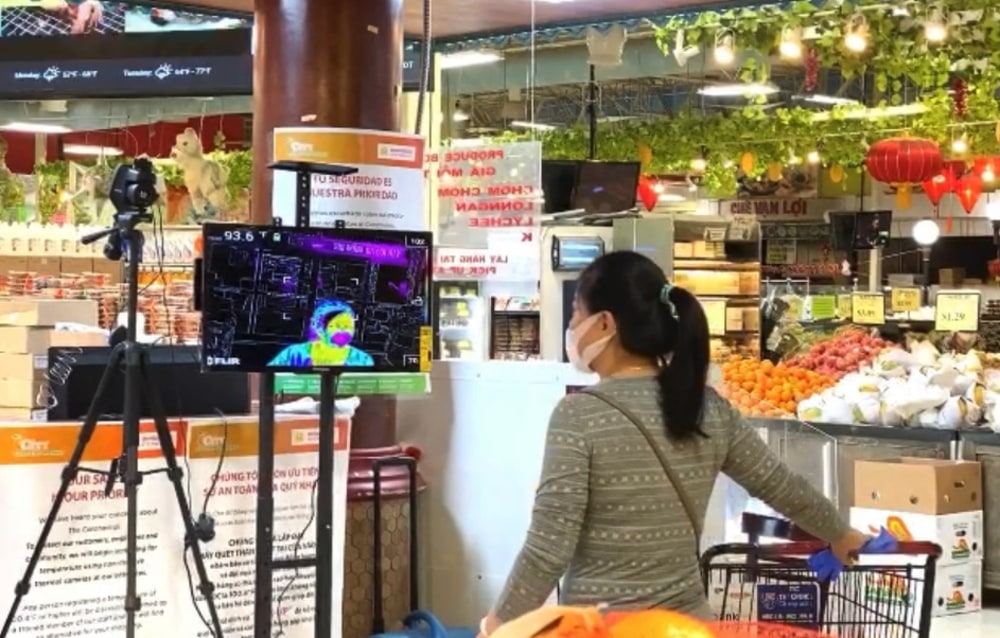Caroline Howard Forbes Staff

Thermal camera registers the temperature of a customer entering a City Farmers Market supermarket in Duluth, Georgia, March 26.
One solution for reopening shopping centers, workplaces, transportation hubs—and schools—is heat screening technology that can see who has a fever. But will that keep us safe and stop another lockdown, or is it just another coronavirus boom business?
A camera that can measure the heat—or infrared radiation—that an object gives off was invented in 1929. Nearly 100 years later, in the midst of the coronavirus pandemic, this health tracking technology has become an essential eye on the rebound of public life. Infrared thermometers and cameras—found on everything from hand-held devices to robots and drones—are now installed in airports and train stations, Amazon warehouses, Apple stores, local hospitals, shopping malls and grocery stores around the world. If it’s not already, temperature scanning will soon be part of the way we live and work.
While the technology can only sense heat and not the virus—fever is a typical though inconsistent symptom of Covid-19—that hasn’t slowed down sales. Early reports project the global thermal scanner market to grow by nearly $2 billion in the next four years. Leading manufacturers such as FLIR Systems, which counts the U.S. Army, Amazon, Wynn Resorts and General Motors as clients, have already gotten a boost; its shares popped 31% in the last month. Scroll below for our portfolio of this fevered time.













